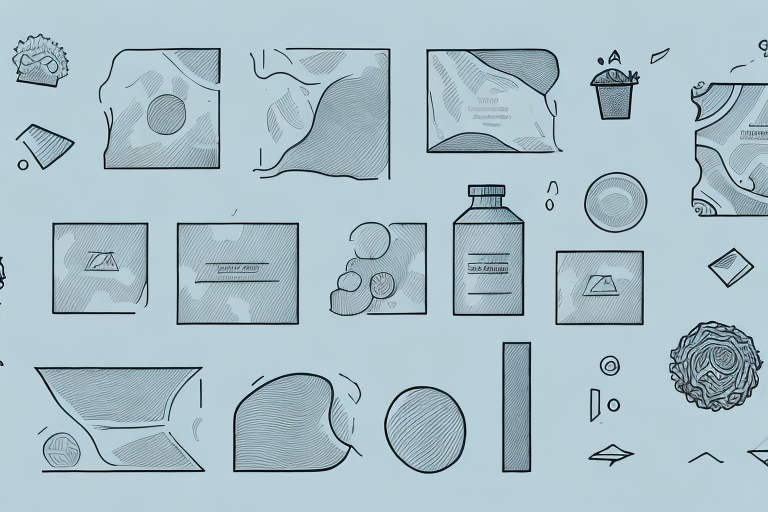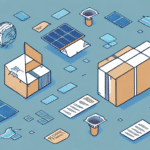Introduction to Biodegradable Packaging
In today's environmentally conscious market, packaging plays a crucial role in product protection, preservation, and marketing. Traditional packaging materials, such as plastics and non-biodegradable products, pose significant environmental challenges due to their extended decomposition periods. This has spurred the adoption of biodegradable packaging materials, which are eco-friendly, sustainable, and offer numerous advantages for both businesses and consumers. This article delves into the benefits of biodegradable packaging, the environmental impact of traditional materials, advancements in sustainable packaging, and strategies for businesses to implement and market these eco-friendly alternatives.
Environmental Impact of Packaging Materials
Traditional Packaging and Its Drawbacks
Traditional packaging materials, particularly plastics, have a lasting detrimental effect on the environment. For instance, plastic bags can take up to 1,000 years to biodegrade, leading to accumulation in landfills and natural habitats. According to the Environmental Protection Agency (EPA), over 8 million tons of plastic enter the oceans annually, threatening marine life and ecosystems.
Advantages of Biodegradable Packaging
Biodegradable packaging materials, such as paper, compressed starch, and organic polymers like polylactic acid (PLA), offer a sustainable alternative. These materials break down naturally through bacterial, fungal, or enzymatic processes, transforming into water, carbon dioxide, and organic matter without harming the environment. Additionally, biodegradable packaging reduces greenhouse gas emissions, decreases dependency on fossil fuels, and minimizes waste accumulation.
- Reduced Waste: Faster decomposition rates compared to traditional plastics.
- Lower Carbon Footprint: Production often requires less energy and resources.
- Preservation of Natural Habitats: Minimizes pollution and protects wildlife.
Benefits of Sustainable Packaging for Businesses
Enhancing Brand Image and Customer Loyalty
Consumers are increasingly prioritizing environmental responsibility in their purchasing decisions. By adopting biodegradable packaging, businesses can demonstrate their commitment to sustainability, thereby enhancing brand image and fostering customer loyalty. A Nielsen study reveals that 73% of global consumers are willing to change their consumption habits to reduce environmental impact.
Cost Savings and Regulatory Compliance
While the initial costs of transitioning to biodegradable packaging may be higher, businesses can realize long-term savings through reduced waste management expenses and potential tax incentives. Moreover, adhering to evolving environmental regulations can prevent hefty fines and protect the company's reputation. Countries like the European Union have implemented stringent laws to limit single-use plastics, encouraging businesses to explore sustainable alternatives.
Competitive Advantage
Implementing sustainable packaging solutions can provide a competitive edge in the marketplace. Companies that lead in sustainability initiatives are more likely to attract eco-conscious consumers and differentiate themselves from competitors who rely on traditional packaging methods.
Innovations in Biodegradable Packaging Materials
Advancements in Material Science
Recent developments in material science have led to the creation of more robust and versatile biodegradable packaging options. Innovations include the use of plant-based plastics derived from cornstarch, sugarcane, and potato starch, which offer comparable durability to conventional plastics while being environmentally friendly.
Eco-Friendly Inks and Adhesives
Beyond packaging materials, advancements also encompass the development of eco-friendly inks and adhesives that are free from harmful chemicals. These sustainable alternatives ensure that the entire packaging lifecycle adheres to environmental standards.
Smart Packaging Solutions
Integrating technology with biodegradable materials has given rise to smart packaging solutions. These include packaging that can monitor product freshness or provide interactive consumer experiences, all while maintaining sustainability.
Implementing Biodegradable Packaging in Your Business
Choosing the Right Material
Selecting the appropriate biodegradable packaging material requires balancing functionality, durability, cost, and sustainability. Factors to consider include the type of product, packaging requirements, and regulatory compliance. Consulting with packaging experts and suppliers can aid in making informed decisions that align with your business goals.
Overcoming Implementation Challenges
Transitioning to biodegradable packaging may present challenges such as higher initial costs and limited supplier availability. However, these obstacles can be mitigated through strategic planning, bulk purchasing to reduce costs, and fostering strong relationships with sustainable material suppliers.
- Cost Management: Invest in sustainable packaging as a long-term strategy for savings and brand value.
- Supplier Partnerships: Collaborate with reliable suppliers to ensure consistent quality and availability.
- Regulatory Navigation: Stay informed about local and international packaging regulations to ensure compliance.
Marketing Your Eco-Friendly Packaging
Effectively marketing biodegradable packaging can enhance brand perception and attract eco-conscious consumers. Highlighting the sustainability aspects on packaging labels, company websites, and social media platforms can communicate your commitment to environmental responsibility. Additionally, transparent communication about the benefits and lifecycle of your packaging can build trust and loyalty among consumers.
Future Trends and Predictions in Biodegradable Packaging
Increased Adoption Across Industries
As environmental awareness grows, more industries are expected to adopt biodegradable packaging solutions. From food and beverage to electronics, the demand for sustainable packaging is poised to rise significantly.
Technological Integration and Innovation
Future advancements may include enhanced biodegradable materials with superior strength and versatility, as well as the integration of smart technologies for improved functionality. Research in biodegradable polymers and composite materials is likely to yield new, more efficient packaging options.
Circular Economy and Recycling Initiatives
The push towards a circular economy, where materials are reused and recycled indefinitely, will further drive the innovation and adoption of biodegradable packaging. Collaborative efforts between businesses, governments, and consumers will be essential in achieving sustainable packaging goals.
Case Studies: Successful Adoption of Biodegradable Packaging
Dell's Bamboo-Based Packaging
Technology giant Dell has successfully implemented bamboo-based packaging, which is both biodegradable and sustainable. This initiative not only reduced their environmental footprint but also resonated with eco-conscious consumers, enhancing brand loyalty.
Walmart's Mushroom Packaging Solution
Walmart has adopted mushroom-based packaging materials developed by Ecovative Design. These materials are biodegradable and serve as an alternative to traditional plastic foam packaging, reducing waste and promoting sustainability in their supply chain.
Unilever's Commitment to Sustainable Packaging
Unilever has pledged to ensure that 100% of their packaging is recyclable, reusable, or compostable by 2025. Their innovative approach includes using post-consumer recycled plastics and exploring new biodegradable materials, setting a benchmark for sustainability in the consumer goods industry.
Conclusion
Biodegradable packaging materials are revolutionizing the way businesses approach sustainability. By transitioning to eco-friendly packaging solutions, companies can significantly reduce their environmental impact, comply with evolving regulations, and cater to the growing demand for sustainable products. While challenges exist in implementation, the long-term benefits for both the planet and businesses are substantial. Embracing biodegradable packaging is not just a trend but a necessary step towards a more sustainable and responsible future.






















